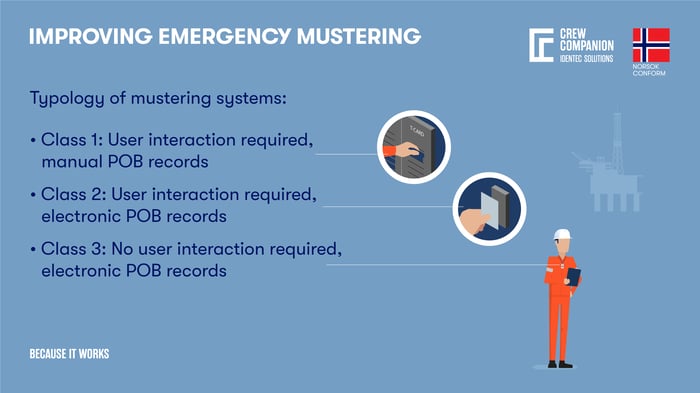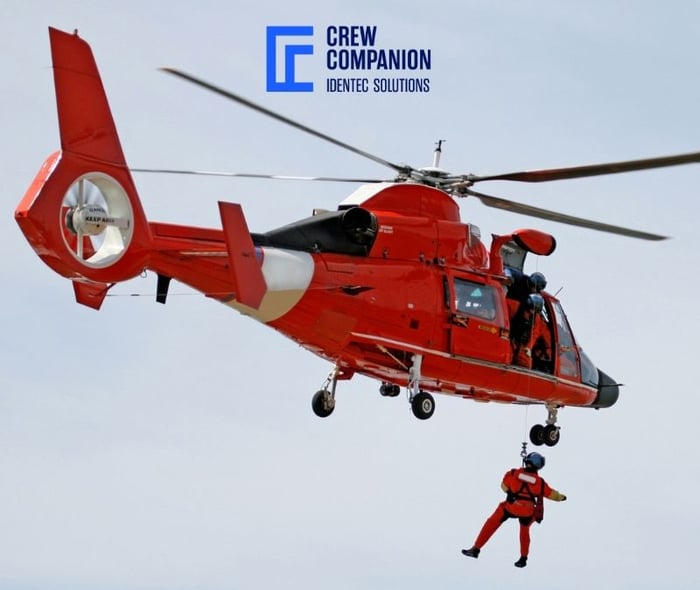Emergency Mustering Whitepaper: How to improve Offshore Safety
Keeping people safe and infrastructure protected is a number one priority for every organisation. Knowing where your staff are can make the difference between life and death in specific situations.
During an emergency, it is vital to know who has or has not left the hazardous area. The ability to track multiple people, at speed in a mass evacuation can prevent injuries, fatalities and loss.
Improving your capabilities for emergency mustering is vital.


MANUAL EMERGENCY MUSTERING
Manual mustering is (still) the most common approach employed to evacuate an offshore installation.
However, there are many intrinsic weaknesses in this approach. The system relies on a small number of trained personnel to undertake the subsequent roll call but also heavily on staff following procedures.
The manual mustering system makes use of a number of identified mustering points close to the work stations facing evacuation. In a large scale event, access to these areas may either be denied or extremely dangerous thus rendering the carefully practiced procedures impossible to follow. In this event the natural reaction of employees is to rapidly disperse.

LESSONS LEARNED: MANUAL EMERGENCY MUSTERING IN REAL SCENARIOS
With rigorous training and regular practice, staff can be directed to muster for a traditional roll call. However, in a real life evacuation people’s natural instinct is to take flight from a threatening situation whether real or perceived. If a real evacuation becomes a requirement, many organisations find it extremely difficult to account for their staff.
The typical challenges of a manual emergency mustering include: Missing personnel, personnel not following evacuation plan, breakdown in communication, and lifeboat inavailability.
Effective management of emergency evacuation is challenging. Ensuring that evacuation routines are regularly practiced, accurately recorded, and critically reviewed for continuous improvement are the basics of proper alert response. They save time when time becomes most valuable: In an emergency situation.

INCREASING OFFSHORE SAFETY: ELECTRONIC EMERGENCY MUSTERING
In today’s offshore installations, three classes of mustering systems can be distinguished based on their grade of automation.
An electronic emergency mustering system is designed to provide visibility and accessibility. The main idea is to let the system do the registration at the mustering point and the communication with the operational headquarter, avoiding the pitfalls of manual mustering.

Typology of mustering systems
.

Download the whitepaper and learn more about
-
How to improve your emergency mustering substantially ...
-
Why manual mustering is challenging ...
-
What type of devices help you to conduct emergency mustering ...
And get:
-
Arguments to improve your rig / vessel emergency response
-
An overview about the current state of emergency mustering standards
-
Answers if you want to progress or stay behind with outdated mustering and safety methods